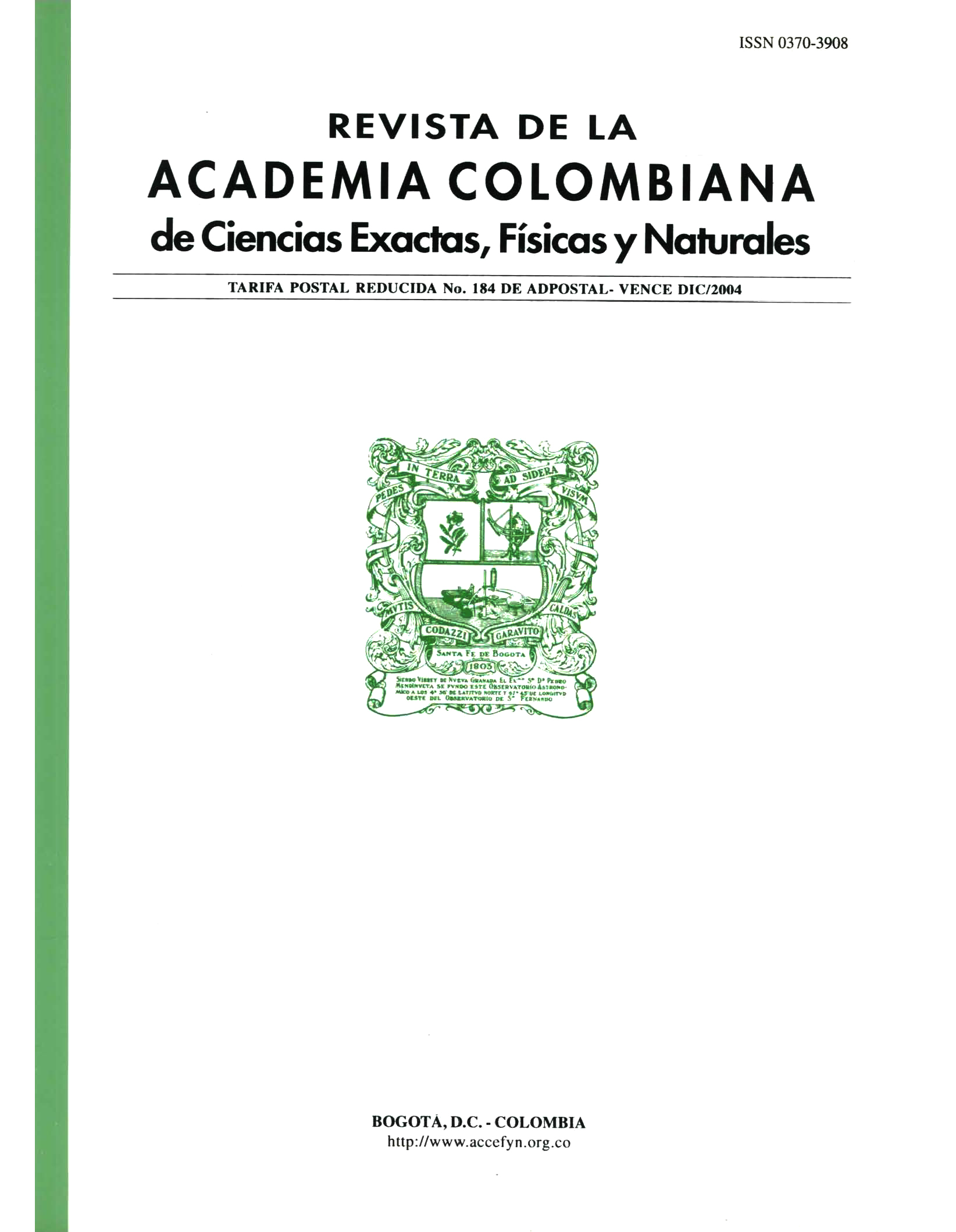Resumen
Aristolochia grandiflora Sw. posee las flores más largas del mundo. La distribución de esta especie incluye México, Centroamérica, Cuba, Jamaica, Colombia, Trinidad y Ecuador, con algunos registros posiblemente procedentes de poblaciones cultivadas o naturalizadas en St. Thomas, Guadalupe y Martinica. Aunque es una especie bien conocida en cultivo, debido a la morfología floral tan extraña y conspicua, es poco conocida en su estado nativo. Además de las dimensiones extremas de la flor, la morfología del perianto es atípica con respecto a las demás especies neotropicales del subgénero Aristolochia, en cuanto a la zigomorfía lateral (i.e. la que modifica el perfil del perianto) y frontal (i.e. la que afecta únicamente al limbo floral), y el desarrollo de dos de las estructuras internas más especializadas, la siringe y el anillo. Se describe el desarrollo floral, con énfasis en el perianto, y se documenta el que sin duda, es el ejemplar con la mayor longitud del perianto hasta ahora conocido en estado silvestre. Finalmente, se discuten las posibles relaciones filogenéticas de la especie.
Referencias
Acevedo-Rodríguez, P. 2003. Bejucos y plantas trepadoras de Puerto Rico e Islas Vírgenes. Smithsonian Institution Press, Washington, 491 pp.
Blanco, M. A. 2002. Aristolochia gorgona, a new species with giant flowers from Costa Rica and Panama. Brittonia 54:30-39.
Blanco, M. A. 2005. Un híbrido espontáneo entre Aristolochia gorgona y A. grandiflora (Aristolochiaceae). Lankesteriana 5: 115-117.
Burgess, K. S., J. Singfield, V. Melendez & P. G. Kevan. 2004. Pollination biology of Aristolochia grandiflora (Aristolochiaceae) in Veracruz, Mexico. Ann. Missouri Bot. Gard. 91: 346-356.
Cammerloher, H. 1923. Zur Biologie der Blüte von Aristolochia grandiflora Swartz. Osterr. Bot. Z. 72: 180-198, t. 5-7.
Daumann, E. 1959. Zur Kenntnis der Blütennektarien von Aristolochia. Preslia 31: 359-372.
Duchartre, P. 1854. Tentamen methodicae divisionis generis Aristolochia. Ann. Sci. Nat. Bot. ser. 4, 2: 29-76.
Endress, P. K. 1994. Diversity and evolutionary biology of tropical flowers. Cambridge Univ. Press, 511 pp.
González, F. 1990. Aristolochiaceae. Flora de Colombia. Monografía No. 12. Instituto de Ciencias Naturales, Universidad Nacional de Colombia, Bogotá, 184 pp.
González, F. 1991. Notes on the Systematics of Aristolochia subsect. Hexandrae. Ann. Missouri Bot. Gard. 78: 497-503.
González, F. 1994. Aristolochiaceae. Flora of Ecuador. Monograph No. 51.
González, F. 1997. Hacia una filogenia de Aristolochia y sus congéneres neotropicales. Caldasia 19: 93-108.
González, F. 1999a: A phylogenetic analysis of the Aristolochioideae (Aristolochiaceae). Ph. D. Dissertation. The City University of New York.
González, F. 1999b. Inflorescence morphology and the systematics of Aristolochiaceae. Syst. Geogr. Pl. 68: 159-172.
González, F. 2001. Una nueva especie de Aristolochia (Aristolochiaceae) de Bolivia. Rev. Acad. Colomb. Ci. Exact. Fís. Nat. 25: 225-228.
González, F. & D. W. Stevenson. 2000a. Perianth development and systematics of Aristolochia. Flora 195: 370-391.
González, F. & D. W. Stevenson. 2000b. Gynostemium development in Aristolochia (Aristolochiaceae). Bot. Jahrb. 122: 249-291.
González, F. & D. W. Stevenson. 2002. A phylogenetic analysis of the subfamily Aristolochioideae (Aristolochiaceae). Rev. Acad. Colomb. Ci. Exact. Fís. Nat. 26 (98): 25-60.
Hilke, L. 1984. Fenología y ecología floral de Aristolochia grandiflora Swartz (Aristolochiaceae) en Costa Rica. Brenesia 22: 1-44.
Hoehne, F. C. 1942. Aristolochiaceas. Fl. Brasílica 15(2): 3-141, t. 1-123.
Klotzsch, F. 1859. Die Aristolochiaceae des Berliner Herbariums. Monatsber. Königl. Preuss. Akad. Wiss. Berlin 1859: 571-625.
Lee McFarling, U. 1994. Nature's Vanishing pharmacy. The Boston Globe, Monday Oct 3: 25.
Murata, J., T. Ohi-Thoma, S. Wu, D. Darnaedi, T. Sugawara, T. Nakanishi & H. Murata. 2001. Molecular phylogeny of Aristolochia (Aristolochiaceae) inferred from matK sequences. APG 52:75-83.
Neinhuis, C., S. Wanke, K. W. Hilu, K. Müller & T. Borsch. 2005. Phylogeny of Aristolochiaceae based on parsimony, likelihood, and Bayesian analyses of trnL-trnF sequences. Plant Syst. Evol. 250: 7-26.
Petch, T. 1924. Notes on Aristolochia. Ann. Royal Bot. Gard. Peradeniya 8:1-108.
Pfeifer, H. W. 1977. A new ecuadorian dutchman's pipe, Aristolochia pichinchensis. Selbyana 2: 29-30.
Poncy, O. 1978. Le genre Pararistolochia, Aristolochiaceae d'Afrique tropicale. Adansonia, ser. 2, 17(4): 465-494.
Wanke, S., F. González & C. Neinhuis. 2006. Evolution of pipevines–Combining morphological and fast-evolving molecular characters to resolve the relationships within Aristolochioideae (Aristolochiaceae). Int. J. Plant Sci. (en revisión).

Esta obra está bajo una licencia internacional Creative Commons Atribución-NoComercial-SinDerivadas 4.0.
Derechos de autor 2023 https://creativecommons.org/licenses/by-nc-nd/4.0

